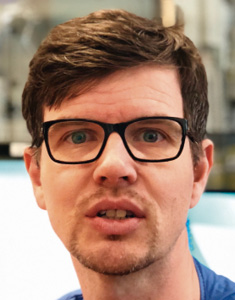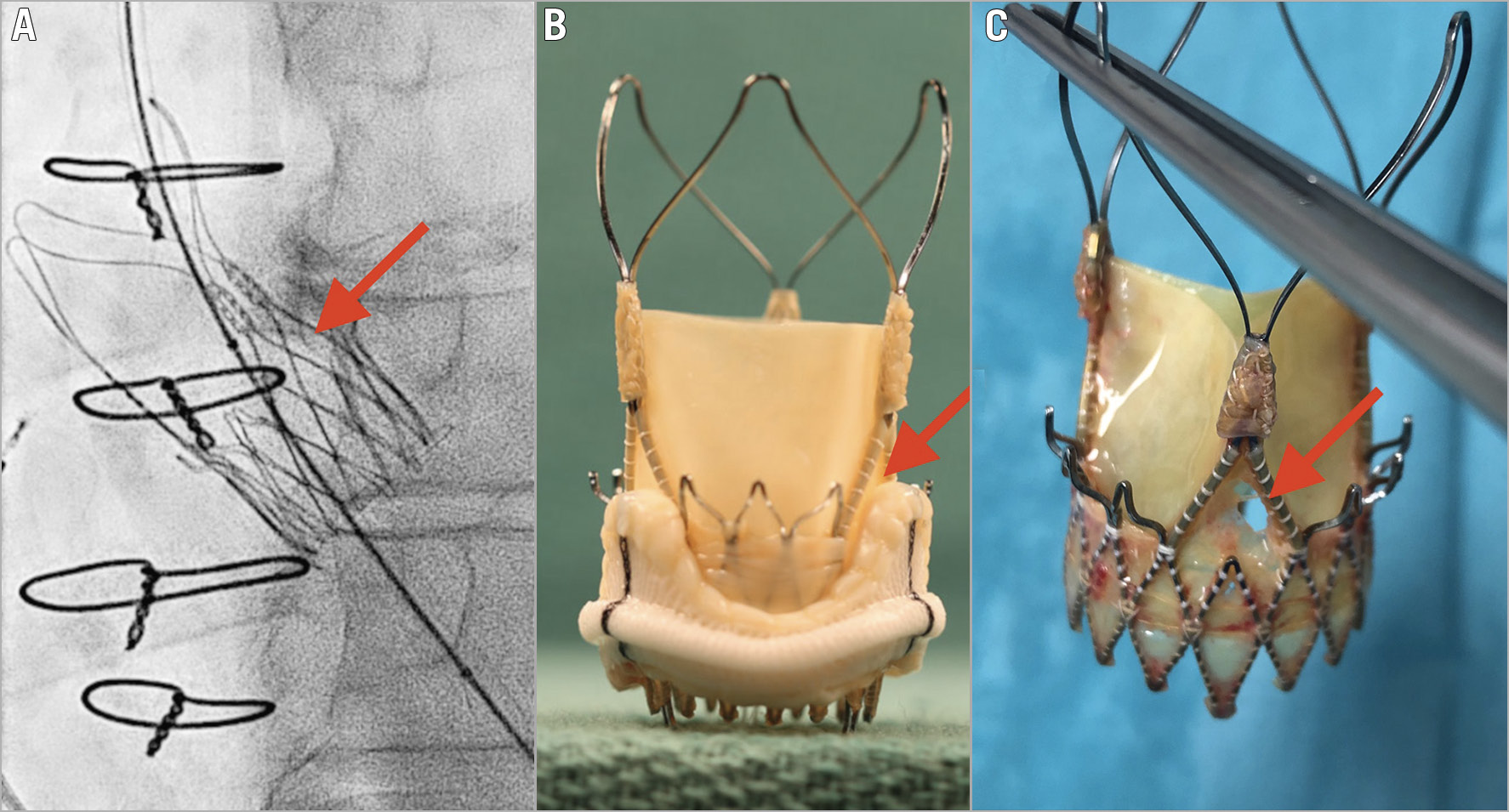

Figure 1. Possible cause of perforated ACURATE neo valve. A) Fluoroscopy after valve-in-valve TAVI using the ACURATE neo inside a Biocor surgical bioprosthesis. Red arrow showing the same area as in panels B and C. B) Ex vivo image showing (red arrow) proximity of the upper edge of the stent post of the Biocor (outside) and the ACURATE neo prosthesis. Image courtesy of Dr Vinayat Bapat and UBQO Limited, London, UK. C) The explanted ACURATE neo, with a hole under the stent post between the right and left cusps (red arrow).
In 2001, a 61-year-old male was operated and a 25 mm Biocor™ (St. Jude Medical, St. Paul, MN, USA) aortic bioprosthesis was implanted. In 2017, the patient developed dyspnoea. Echocardiography revealed severe transvalvular regurgitation.
In January 2018, a transcatheter aortic valve implantation (TAVI) valve-in-valve procedure was performed using a 23 mm ACURATE neo™ prosthesis (Boston Scientific, Marlborough, MA, USA) (Figure 1A). The prosthesis was post-dilated with a 22 mm balloon. Postoperative and 30-day echocardiography was unremarkable.
In August 2018, the patient reported exertional dyspnoea. Echocardiography showed severe paravalvular and transvalvular aortic regurgitation. There were no signs of infection. Both prostheses were explanted and a PERIMOUNT Magna Ease 23 mm bioprosthesis (Edwards Lifesciences, Irvine, CA, USA) was successfully implanted. Recovery was uneventful.
The ACURATE neo TAVI prosthesis has a triangular area under each stent post which is covered with porcine pericardium but not protected by metal, possibly a weak spot. It was noticed that the stent posts of the Biocor prosthesis and the ACURATE neo were aligned (Figure 1B), putting the weak spot in contact with the top of the surgical bioprosthesis’ stent posts, and causing a hole at this location by abrasion (Figure 1C).
This mechanism of prosthesis failure may indicate that the ACURATE neo prosthesis should be used with caution in valve-in-valve procedures (Moving image 1),1.
Conflict of interest statement
A. Rück has received lecture honoraria, research support and proctor fees from Boston Scientific and Edwards Lifesciences. M. Settergren has received lecture honoraria and proctor fees from Abbott, Boston Scientific, Medtronic, W.L. Gore and Edwards Lifesciences. N. Saleh has received lecture honoraria and proctor fees from Boston Scientific. The other author has no conflicts of interest to declare.
Supplementary data
To read the full content of this article, please download the PDF.
Moving image 1. Location of the perforation in the ACURATE neo prosthesis in the weak spot just below the stent post.

